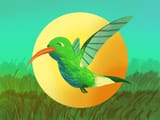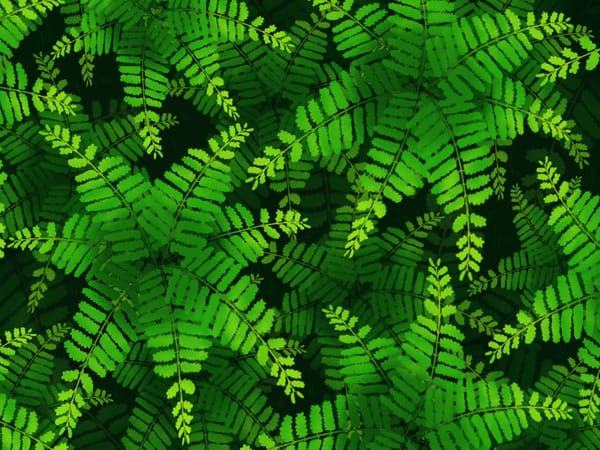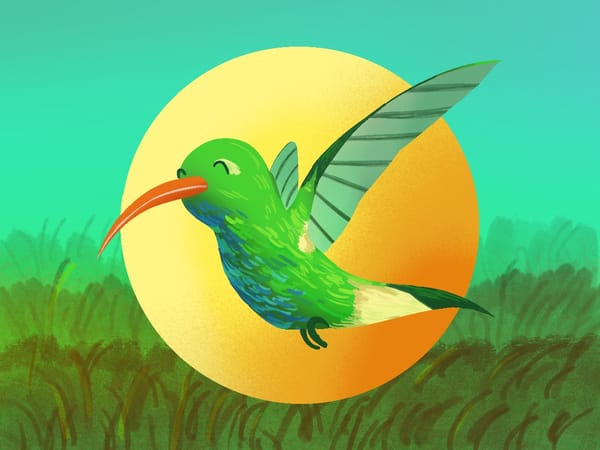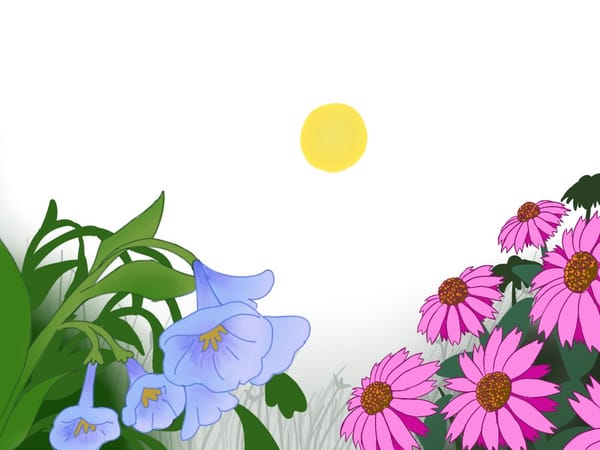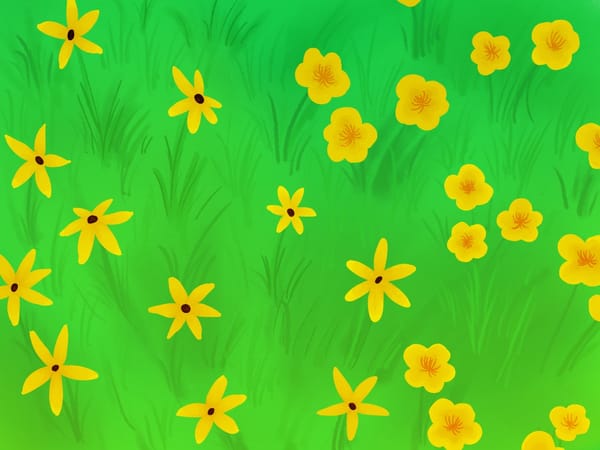Finishing Up My Fall Planting
My plan to put only 8 more plants into the ground turned into a second order of an additional 24 plants before I called fall planting complete.

For my second order of native plants, I got two types of plants that inspired me when I was just browsing options on Prairie Nursery's website: Maidenhair Ferns and Bush Honeysuckle. I thought the Maidenhair Ferns would look great in my shade bed bordering my rock garden, and the Bush Honeysuckle, well, they were just too lovely to pass up.
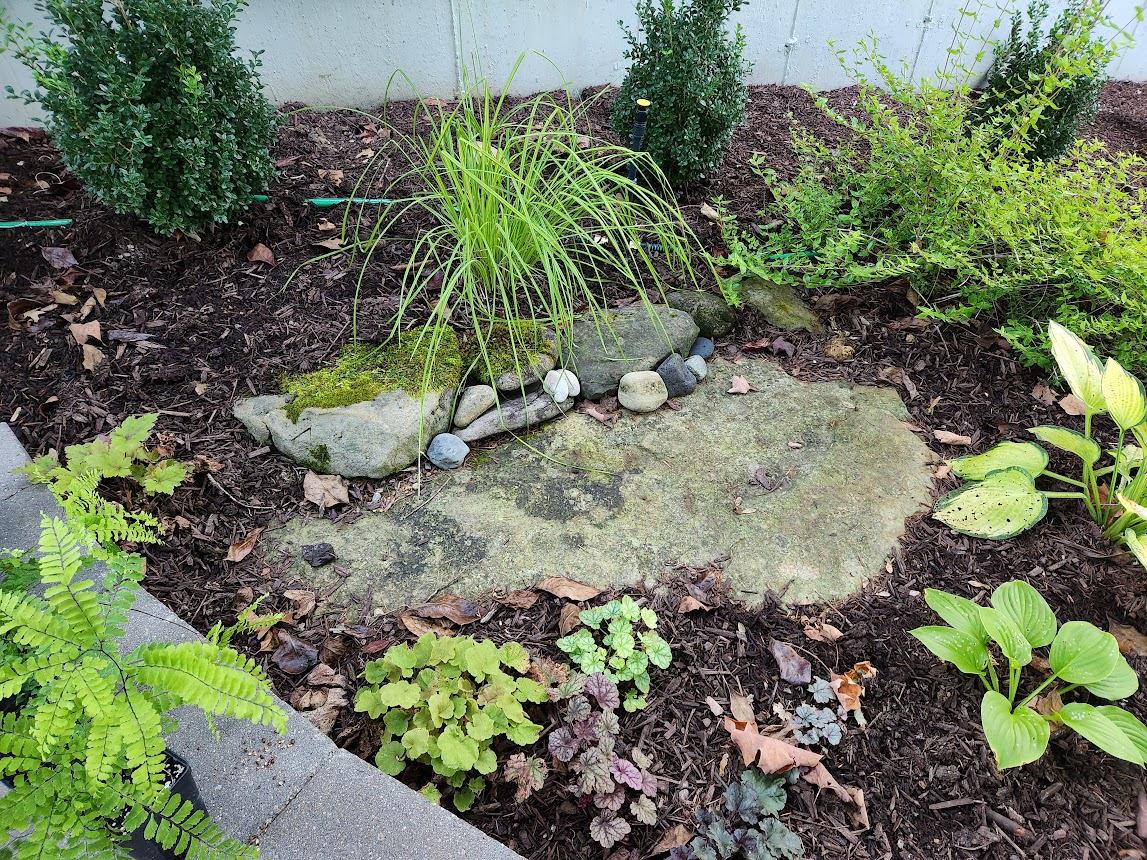
I hadn't yet done any digging up of the non-natives in this part of the garden, so to get my Maidenhair Ferns into the ground, I first needed to remove the non-native plants that were in the way — the grass directly behind the rocks and the bush to the right of the grass.
As an aside, the Boxwoods aren't native. However, they aren't invasive, so I've made the decision that they are the one non-native plant I'm going to keep. I want something evergreen that will cover the concrete outer walls of the porch year-round. But more than that, I have babied the heck out of these Boxwoods to make sure I didn't kill them like so many other things I've put in the ground. So I've decided to keep them for their functionality and because I can't bear the thought of ripping them out after all of the work I've put into growing them.
After getting the grass and bush out, I got the Maidenhair Ferns into the ground. It didn't take much time at all. I've done a lot more digging in this area than the last one I planted in, so I didn't run into any surprise boulders to slow me down, and the dirt was pretty loose.
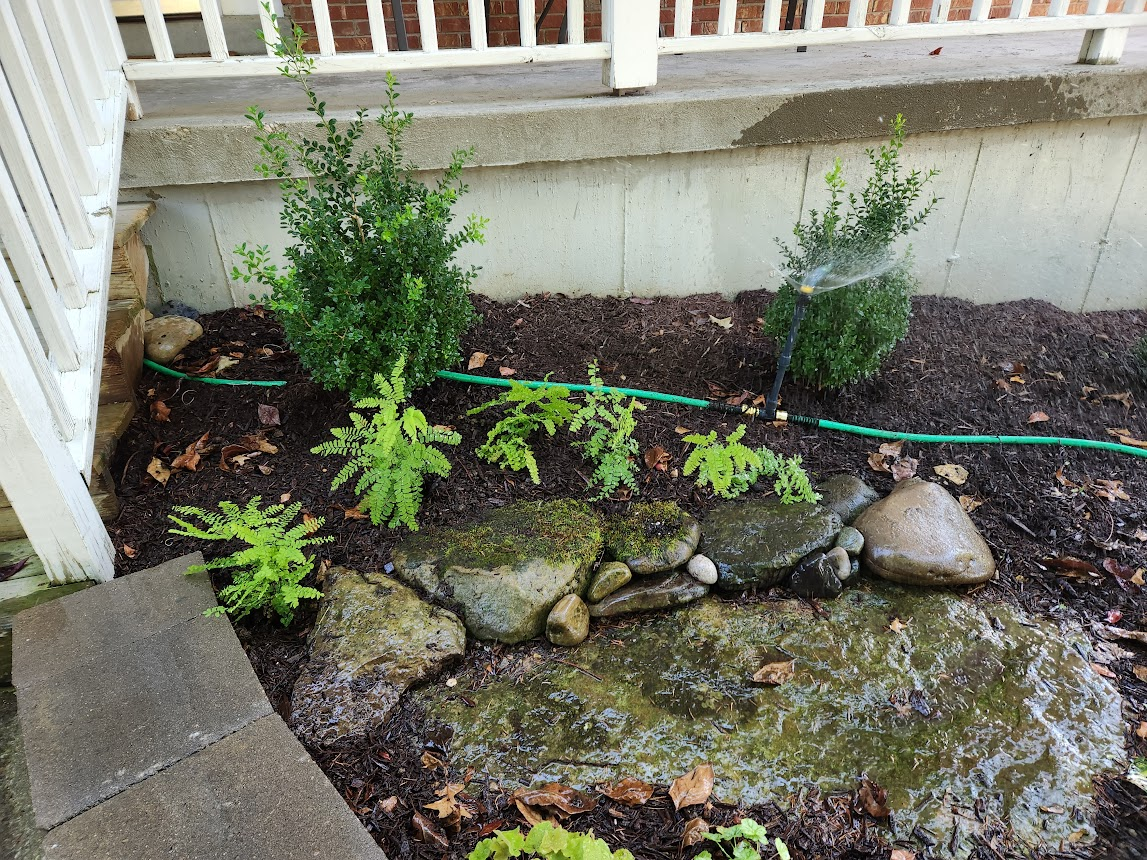
I was excited to find that my dirt here was more loamy than I remembered it being. When I first moved in, this entire garden was covered by really thick plastic landscaping fabric that I removed, and the dirt below the fabric was incredibly compacted clay. It seems like all of the work I've been doing is helping the dirt recover and become more rich and loose.
Next up were the three Bush Honeysuckles I ordered. I absolutely love Honeysuckle and was thrilled when I discovered that there's a native version of them. Plus, they grow to be just the right size for what I need to serve as the rear border between the sunny side of my garden and the shady side of it. I planted two of them behind the section of native plants I've already installed this year and one in front of my pine tree.
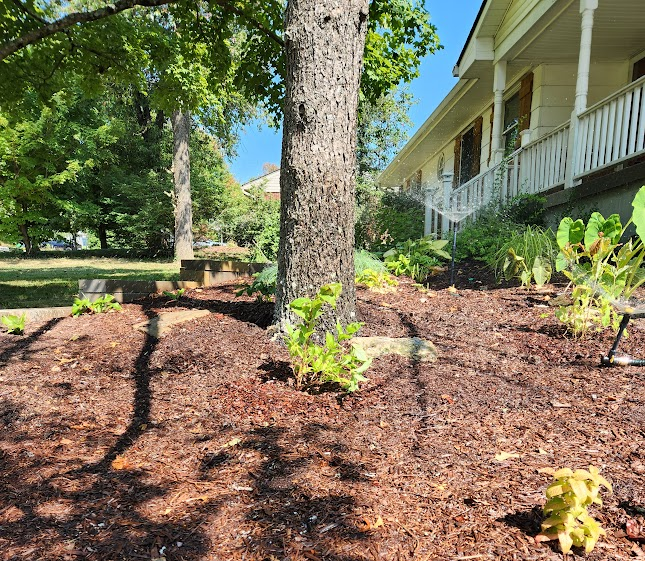
All of the planting went so quickly that I decided to just go ahead and remove the remainder of non-native plants and cultivars from the space. Most of them were in the shade garden, and they were all relatively small plants, so they didn't take too long to dig up. When I was finished, everything just looked so sparse and sad.
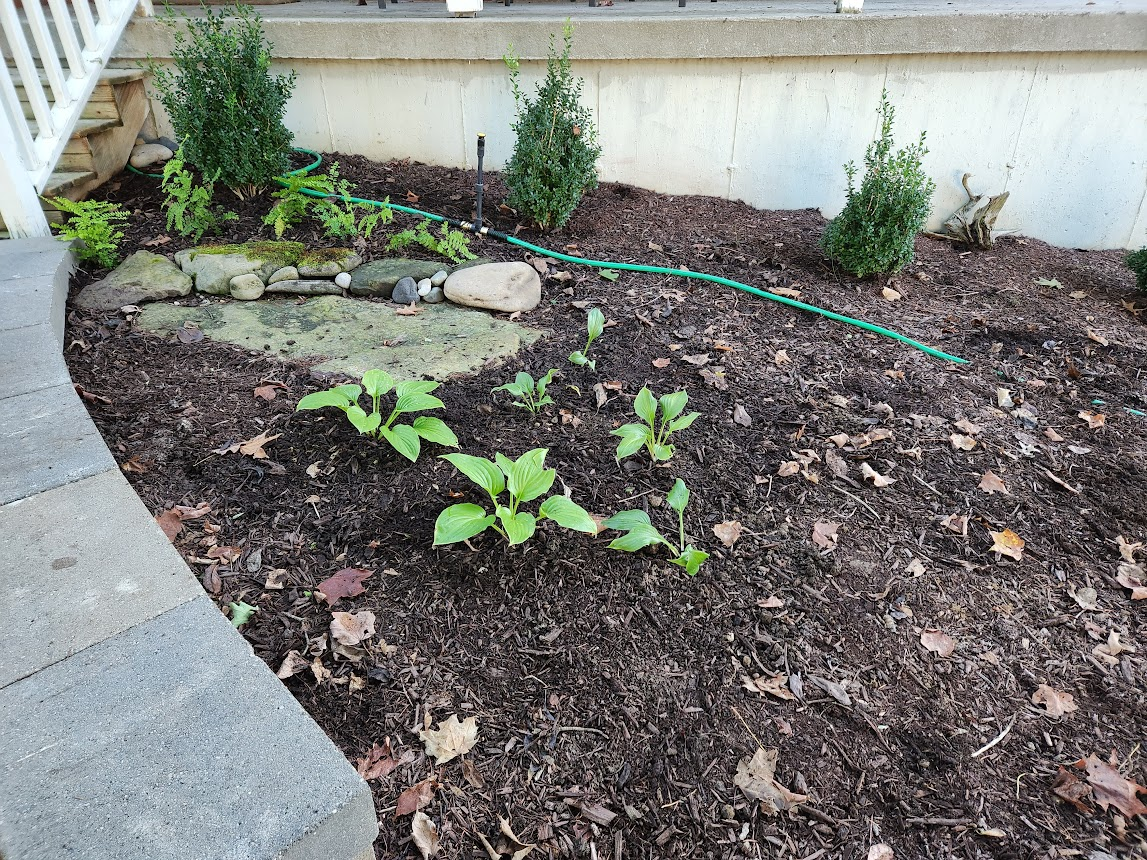
In addition to everything being sparse, I know that deer really like to chomp off the leaves of the native Hostas. However, I noticed that in another section of my garden where I have the same Hostas planted behind some non-native St. John's Wort, the deer don't eat the Hostas. So I developed a theory: if you plant things deer hate in front of things they like, maybe they won't eat any of those things.
Well, obviously I needed to test that theory, which meant I needed to order just a few more plants. And while I was looking at my St. John's Wort, I decided I needed to go ahead and dig that up because it's invasive, which led to the thought: "It would be nice to replace those with the native version of St. John's Wort." And Prairie Nursery was offering an end-of-season special of 30% off of their 16-plant trays, so I might as well get one of those to make the shade garden look less sad in the spring when things start growing again.
And there you have it. I talked myself into doing just one more order of plants and somehow ended up with 24 more plants to put into the ground before it's too late. Sigh. And yay.
A few weeks later, my new plants arrived:
- Six Golden Groundsel — Deer hate these, so I'm going to plant them around the Hostas to test my theory.
- Two native Shrubby St. John's Wort to replace the two invasive ones I removed.
- Four Columbine, four Wild Geranium, four Virginia Waterleaf, and four Dwarf-Crested Irises to fill in some of the space around my rock garden and native Hostas to make everything look happier in the spring.

"Thankfully for my budget," I thought when I finished, "we have reached the end of the season where nurseries will send you plants, so I won't be buying anything else for several months."
But I was wrong.
Next time, I'll tell you the story of how buying a riding lawnmower led me into a deep dive on growing your own native plants from seed. It looks like my gardening work will continue through the winter after all. Make sure to subscribe to find out what happened and see how it goes.
